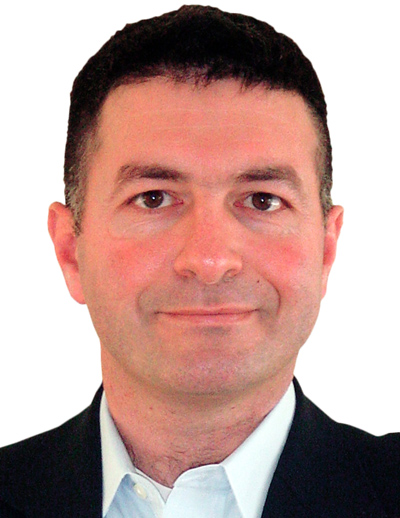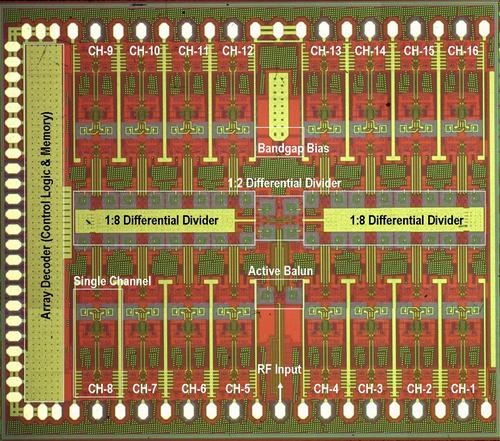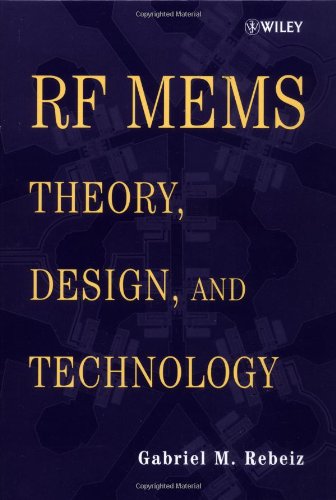
RF MEMS and Phased Array Pioneer Gabriel Rebeiz Appointed to UC San Diego Endowed Chair
By:
- Ioana Patringenaru
Published Date
By:
- Ioana Patringenaru
Share This:
Article Content

Gabriel Rebeiz, a professor in the Electrical and Computer Engineering department, has been appointed to the Wireless Communications Industry Endowed Chair at the Jacobs School of Engineering.
Gabriel Rebeiz, a professor in the Electrical and Computer Engineering department at the Jacobs School of Engineering at UC San Diego, who is considered one of the fathers of RF MEMS technology and advanced SiGe/CMOS phased array integrated circuits, has been appointed to the Wireless Communications Industry Endowed Chair at the school.
Over the past 15 years, Rebeiz has become known as one of the scientists who helped guide research on radio frequency micro-electro-mechanical systems, known as RF MEMS, from the field’s birth to its implementation in a wide range of devices. RF MEMS are minute electronic components, which are used in many systems, including tunable antennas for 3G and 4G cell phones.
Rebeiz also has done ground-breaking work in the field of silicon-based phased array chips. The chips are very complex radio-frequency integrated circuits, which perform analog and digital phased-array processing and are used in satellite communications and in radar systems. Phased arrays allow the electronic steering of an antenna beam in any direction by controlling the phase at each antenna element. The arrays have been in use since the 1950s in defense applications but have seen limited use in commercial systems due to their relatively high cost. Rebeiz’s research aims to greatly reduce the cost of these phased arrays.
Rebeiz joined the Jacobs School of Engineering faculty in 2005 and heads the UCSD/DARPA Center on RF MEMS Reliability and Design Fundamentals. His wireless communications research focuses on developing RF MEMS switches, reconfigurable radios, silicon-based phased arrays and antennas transmitting in the RF to millimeter-wave range for cell phones, satellites, automotive radars, radio telescopes and beyond.
The ultimate aim is to build faster communication systems. One day, the new technologies incubated in Rebeiz’s lab will make today’s speediest wireless systems feel slower than dial-up modems from the early 1990s. Much of Rebeiz’s research is in radio-frequency and microwave engineering, a field that comprises work on integrated circuits, antennas, RF MEMS and other very small components that work at extremely high frequencies.
“Dr. Gabriel Rebeiz is a most impressive shining star among the microwave research community,” said Tatsuo Itoh, a professor of electrical engineering at UCLA who is considered a top authority in the field.
Rebeiz’s work in the areas of submillimeter-wave integrated antennas, MEMS and millimeter-wave integrated phased arrays particularly stands out, Itoh said. “Several times in his career, he has amazed the world while inventing something new and completing development up to the practical stage.”
That is indeed Rebeiz’s trademark, said Dave Rutledge, the Tomiyasu Chair of Electrical Engineering at the California Institute of Technology. He was Rebeiz’s Ph.D. advisor at Caltech. Rebeiz takes a long-term view of his work, Rutledge said. He also has a knack for spotting research that can be commercialized. With the help of his graduate students, he can spend several years turning pure research into viable devices that are almost ready to be commercialized. An investment windfall from private companies and the U.S. government usually follows. The process is akin to taking a raw piece of marble and turning it into an elaborate sculpture, Rutledge said.
“Gabriel often won’t do the first paper on a topic,” Rutledge said. “But he’ll do the best paper.”
Rebeiz explained that his passion for research and teaching drives him to excel. “When you become really good at something, you enjoy it at a different level,” he explains, loosely paraphrasing Amy Chua, of “Tiger Mother” fame.
Rebeiz’s research focus
To make communications faster, systems developed in Rebeiz’s lab at the Jacobs School have demonstrated systems working in the 60 GigaHertz range with data transfer up to six gigabits-per-second, which is 12 times faster than the best USB protocols.

The UCSD DARPA Smart Q-Band 4x4 Array Transmitter, the world’s most complex silicon phased array chip back in 2007.
In the RF MEMS field, Rebeiz led a team at the University of Michigan, where he taught from 1988 to 2004, that investigated the fundamental concepts of RF MEMS switches and demonstrated extremely low-loss RF MEMS phase shifters at 2-110 GHz, low-loss tunable RF MEMS filters at 1-20 GHz and reconfigurable RF MEMS antennas and tuners at 2-60 GHz. The work continued at the Jacobs School with an emphasis on reconfigurable networks for cell phones and wideband radios (800 MHz to 6 GHz). Prof. Rebeiz now heads the UCSD/DARPA Center on RF MEMS with 12 member companies.
Rebeiz also has pioneered silicon SiGe/CMOS phased array chips that have become the cornerstone of U.S. commercial and defense technology. His group has developed 4-16 element phased array chips using CMOS/SiGe technology at 6-110 GHz. They have recently demonstrated the first 100 GHz wafer-scale phased array transmitter using high efficiency on-chip antennas. Other work in silicon ICs include very low noise millimeter-wave SiGe and CMOS receivers for imaging systems, deep submicron CMOS for THz applications, and integrated transceivers at 30-200 GHz for communication systems.
Another research focus has been millimeter-wave and terahertz antennas. Designs at these frequencies are used in virtually all radio astronomical systems, Rebeiz said. His lab’s high-quality antennas can be found in the world’s most powerful radio telescopes, Rutledge said.
Teaching as a passion
Rebeiz has established his impressive research track record with the help of the 42 Ph.D. students and 16 post-doctoral fellows he has graduated and mentored, both at the Jacobs School and at the University of Michigan. Seven of his graduate students and six of his post-doctoral fellows have taken faculty positions at U.S. and international higher education institutions.

Rebeiz authored a textbook on RF MEMS.
Alumni from Rebeiz’s research group include Qualcomm President and COO Steven Mollenkopf; a number of Qualcomm vice-presidents; Walid Ali-Ahmad, head of the 3G effort at MediaTek; Curtis Ling, co-founder and CTO of Maxlinear; Sanjay Raman, a professor at Virginia Tech, DARPA program manager and former nuclear officer on U.S. - submarines; Guan-Leng Tan, deputy director at DSO Singapore, the local equivalent of DARPA; Chen-Yu Chi at Agilent, one of the fathers of the PNA-X technology—the most advanced network analyzer in the world; Jeremy Muldavin, a group leader in the Advanced Silicon Technology Group at the MIT Lincoln Lab; Jad Rizk, RF/mixed-signal group leader at Intel’s Technology and Manufacturing Group; and Professor George V. Eleftheriades, the Velma M. Rogers Graham Chair in Engineering at the University of Toronto, among many others.
Rebeiz said he regularly keeps in touch with his former students, both in academia and in industry. “I see the world through my students’ eyes,” he said. “I learn from them as much as they learn from me.”
His relationship with his students is perhaps best described in the introduction to his best-selling textbook, “RF MEMS: Theory, Design and Technology,” Wiley, (2003). One of his students told him: “None of us would have stayed in graduate school had it not been for you.” Rebeiz replied: “I would like for my students to know that I would not have remained a professor if it were not for them.”
Rebeiz has received numerous awards reflecting his research and teaching achievements, including most recently the 2008 Jacobs School of Engineering Teaching Award, the 2010 IEEE Microwave Theory and Techniques Distinguished Educator Award and the 2011 IEEE Antennas and Propagation John D. Kraus Antenna Award. He is an IEEE Fellow, an NSF Presidential Young Investigator and an URSI Koga Gold Medal Recipient.
The Wireless Communications Industry Endowed Chair in engineering was established at UC San Diego in 1996. The chair was made possible by contributions from corporate members of the school’s Center for Wireless Communications. The endowed chair is intended to recruit and retain outstanding faculty members whose research is related to the field of wireless communications.
Share This:
You May Also Like
Stay in the Know
Keep up with all the latest from UC San Diego. Subscribe to the newsletter today.


